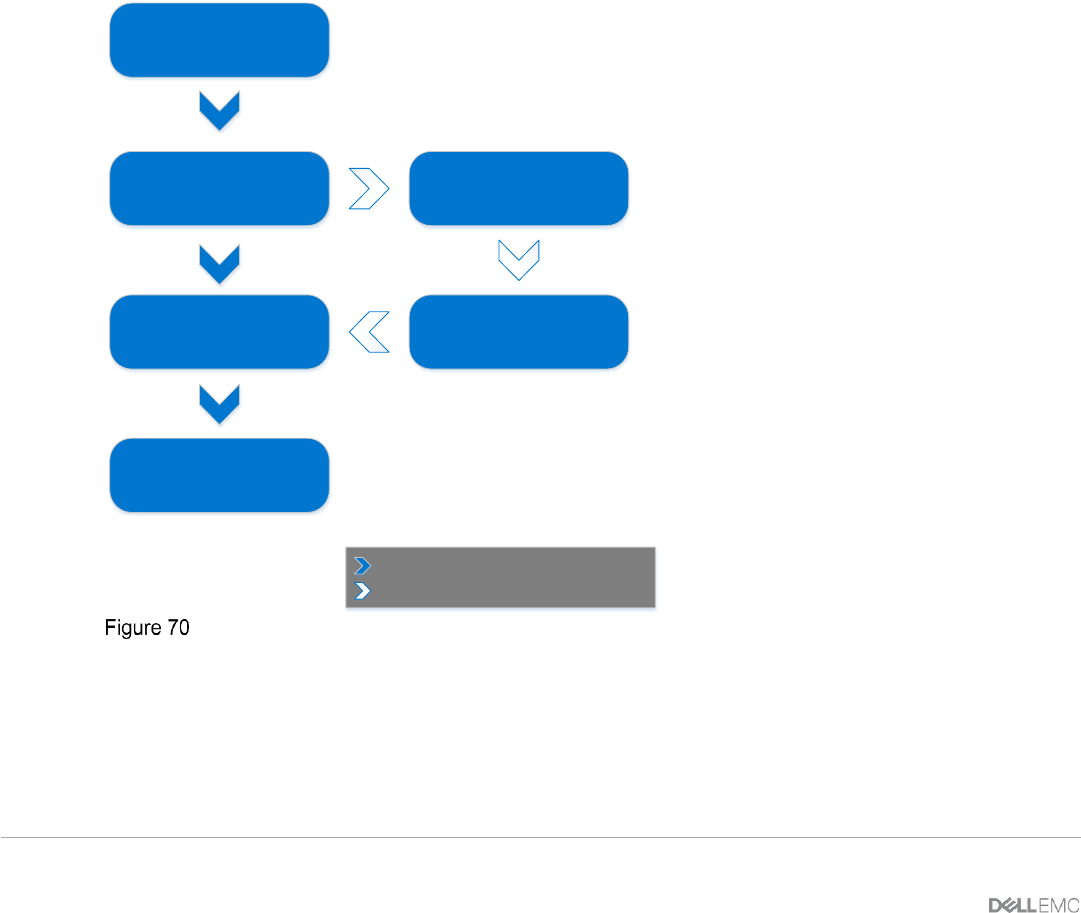Users Guide
Table Of Contents
- 1 Introduction
- 2 SmartFabric Services for PowerEdge MX: An overview
- 3 SmartFabric mode requirements, guidelines, and restrictions
- 3.1 Create multi-chassis management group
- 3.2 Upstream network requirements
- 3.3 VLAN scaling guidelines
- 3.4 Configuring port speed and breakout
- 3.5 Switch slot placement for SmartFabric mode
- 3.6 Switch-to-Switch cabling
- 3.7 NIC teaming guidelines
- 3.8 Maximum Transmission Unit (MTU) behavior
- 3.9 Other restrictions and guidelines
- 4 Creating a SmartFabric
- 4.1 Physically cable MX chassis and upstream switches
- 4.2 Define VLANs
- 4.3 Create the SmartFabric
- 4.4 Configure uplink port speed or breakout, if needed
- 4.5 Create Ethernet uplink
- 4.6 Configure Fibre Channel universal ports
- 4.7 Create Fibre Channel uplinks
- 4.8 Configuring the upstream switch and connect uplink cables
- 5 Deploying a server
- 6 SmartFabric operations
- 7 Switch operations
- 8 Validating the SmartFabric deployment
- 9 SmartFabric troubleshooting
- 9.1 Troubleshooting errors encountered for port group breakout
- 9.2 Troubleshooting Spanning Tree Protocol (STP)
- 9.3 Verify VLT/vPC configuration on upstream switches
- 9.4 Discovery of FEM and compute sleds
- 9.5 Troubleshooting uplink errors
- 9.6 Troubleshooting FC/FCoE
- 9.7 SmartFabric Services – Troubleshooting commands
- 10 Uplink configuration scenarios
- 10.1 Scenario 1 - SmartFabric deployment with Dell EMC PowerSwitch Z9100-ON upstream switches
- 10.2 Scenario 2 - SmartFabric connected to Cisco Nexus 3232C switches
- 10.3 Scenario 3: Connect MX9116n FSE to Fibre Channel storage - NPIV Proxy Gateway mode
- 10.4 Scenario 4: Connect MX9116n FSE to Fibre Channel storage - FC Direct Attach
- 10.5 Scenario 5: Connect MX5108n to Fibre Channel storage - FSB
- 10.6 Scenario 6: Configure Boot from SAN
- A Hardware used in this document
- B Dell EMC Unity information
- C Additional information
- D Validated components
- E Technical resources
- F Support and feedback

75 Dell EMC PowerEdge MX SmartFabric Configuration and Troubleshooting Guide
9 SmartFabric troubleshooting
This section provides information on errors that might be encountered while working with a SmartFabric.
Troubleshooting and remediation actions are also included to assist in resolving errors.
9.1 Troubleshooting errors encountered for port group breakout
The creation of a SmartFabric involves executing specific steps in a recommended order. The SmartFabric
deployment consists of four broad steps all completed using the OME-M console:
1. Create the VLANs to be used in the fabric.
2. Select switches and create the fabric based on the physical topology desired.
3. Create uplinks from the fabric to the existing network and assign VLANs to those uplinks.
4. Create and deploy the appropriate server templates to the compute sleds.
For cases where breakout of port groups is required, the breakout must be configured after the SmartFabric
creation and before adding the uplinks.
CREATE VLANs
PORT BREAKOUT >
HARDWARE DEFAULT
PORT BREAKOUT >
SELECT DESIRED
BREAKOUT TYPE
CREATE FABRIC
ADD UPLINKS
CREATE AND DEPLOY
SERVER TEMPLATES
EXECUTE BASED ON BREAKOUT REQUIREMENT
EXECUTE WHEN BREAKOUT NOT REQUIRED
Recommended order of steps for port breakout while creating SmartFabric
You may encounter the following errors if the recommended order of steps is not followed:
• Configuration of the breakout requires you to create the SmartFabric first. When attempting to
configure breakout before creating a SmartFabric, the following error displays:










